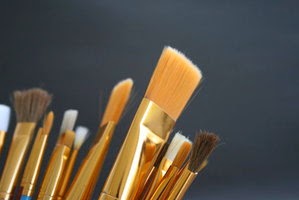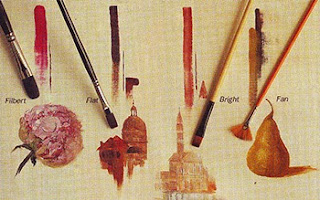Advertisement
Paint Brush - Technical - Q&A
Q. Can I use my acrylic and watercolor brushes for painting with water soluble oils?
Q. Can I use my acrylic and watercolor brushes for painting with water soluble oils?
 A. You may use your brushes any way you choose if you get the results you want. But your brushes will generally work better and last longer if you use them with the medium for which they were designed.
A. You may use your brushes any way you choose if you get the results you want. But your brushes will generally work better and last longer if you use them with the medium for which they were designed.Over the years, brushes have been fine tuned by manufacturers in response to artists' requirements, and each one is made for a specific purpose. Their fibers-natural hair, synthetics or a mixture of the two-have qualities that respond to their use in very particular ways. As a result, their versatility has some limitations The two areas that most notably affect these limitations are the viscosity of the paint and the solvent you're using with the paint.
If you use paints thickly, as impasto, bristle brushes will be the most useful because they're the stiffest. So if you're using your water-soluble oils thickly, not recommend using your soft-hair water color brushes. Your acrylic brushes, however are acceptable in this case if they're synthetic or relatively stiff bristled. If you plan to use your water soluble oils more thinly, as in glazing, use soft-hair or synthetic brushes designed for oil painting.



